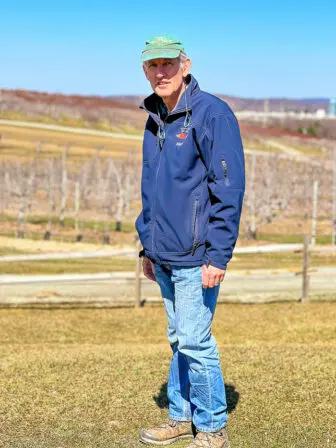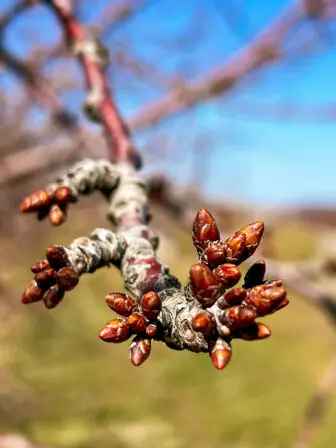It wasn’t the unusually warm days in the winter that worry fruit tree farmers. It’s the unusually warm nights.
Fruit trees enter dormancy in the early part of the winter, typically ending in January. After that, they respond to temperature changes. “It only takes a number of nights over 40 degrees to break dormancy,” said Mark Doyle of Fishkill Farms. “And then we’re off to the races.”
There are two dangers associated with fruit trees waking up prematurely. First, once they get used to breaking dormancy earlier, they lose some of their natural cold hardiness, said Daniel Donahue of the Cornell Cooperative Extension. For instance, apple trees can usually withstand temperatures as low as minus 25 degrees. “The real risk then is wild changes in temperature,” he said. “You get a week of 50-degree weather and then one night it drops to 10 degrees; that’s dangerous for the tree.”
Second, a mild winter can cause a tree to set up its buds and flowers — which ideally produce fruit — too soon. If the weather remains mild, it’s not too much of a problem. But the earlier the buds and flowers come, the more time there is for a cold snap that will kill them and cripple production for the year.
That’s what happened in 2020, when a mild winter followed by an early May frost destroyed some of Fishkill Farms’ peach crop, although Doyle said it could have been worse.
“The guys up around Red Hook had a dramatically decreased crop,” he said. “We seem to have our own little microclimate going on down here.”
In some cases, a touch of late frost can be helpful, Donahue said. Once the trees fully bloom, farmers will prune many of the flowers. If every bud flowered, and every flower fruited, the resulting fruits would be small. “You only need about 10 percent of those blossoms,” he said. “Sometimes Mother Nature takes care of that expense for you.”

For apples in the Mid-Hudson Valley, the most important day of the year might just be today. When asked for the ideal timing for apples, Donahue said, “green tips on Macintosh in Highlands on March 31.” In the past two weeks, the silvertips should have started to emerge. These are silver, velvet tissue that pops out of the tops of the buds as they swell. They’re followed by green tips, the stage when just the tips change to a light green color. If the apple trees can hold out until March 31 to reach that stage, or even later, it’s a good sign.
Neither the silver nor the green tips were out in Fishkill on March 20, the chilly first day of spring, although the peach trees stuck out at a distance as being noticeably redder than the rest of the trees in the orchard.
“That’s fine,” said Doyle when asked about the peach trees. “They’ll just get progressively more colorful.” But the chill on March 20 was helping to keep the rest of the orchard from waking up, which is just how Doyle likes it.
The cold also helps to suppress the plum curculio, a beetle that emerges in early spring to feed on flowering fruit trees and developing fruit. “They overwinter in the soil but also in the surrounding forest,” Doyle said. “They’ll fly into the orchard and attack the fruit. It’s not something we can control particularly well.”
If the trees flower too early, and farmers see from the forecast that a 10-degree night is coming, Donahue said there’s not much they can do. “You’re at the mercy of the weather,” he said.


